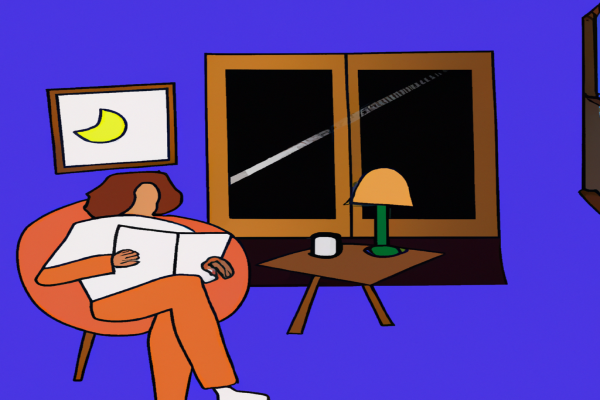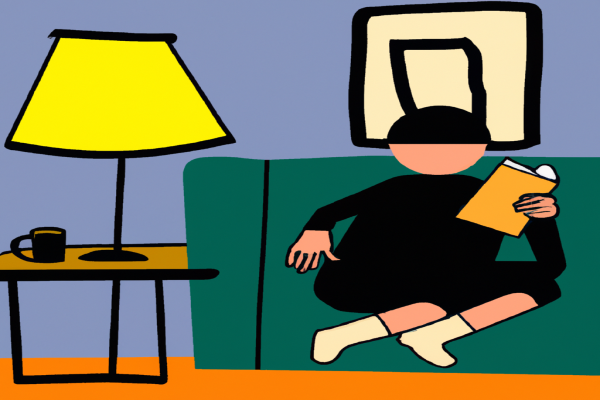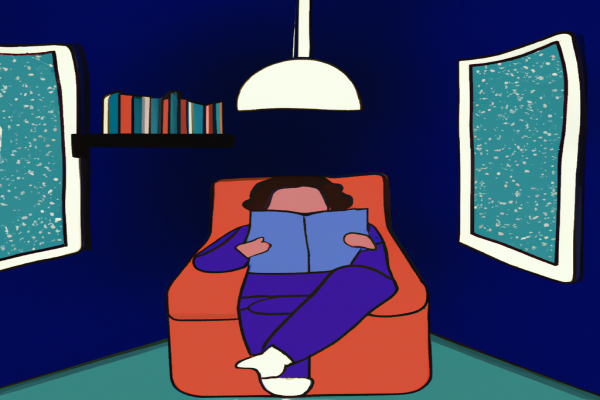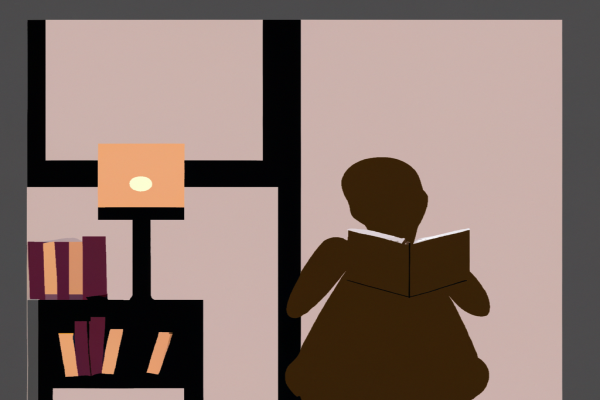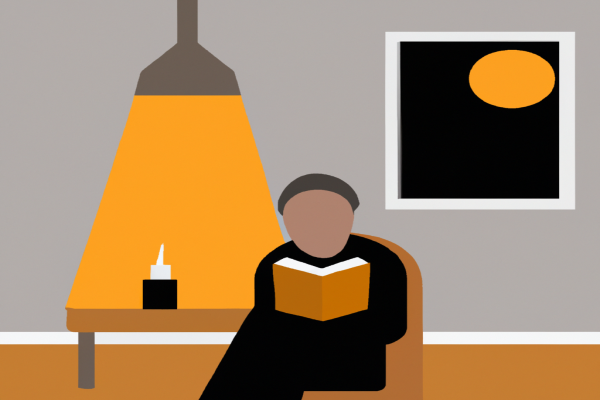The Yellow Wallpaper: Summary
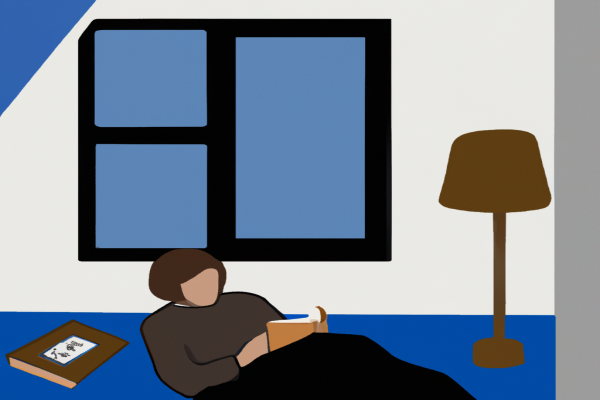
The Yellow Wallpaper is a short story by Charlotte Perkins Gilman, published in 1892. The story follows a woman who has been prescribed rest and relaxation as treatment for her post-partum depression, but she is confined to a room with yellow wallpaper that she finds oppressive and suffocating. As the confinement begins to take its toll, the woman’s mental state deteriorates and she develops an obsession with the wallpaper. Eventually, in her distorted perception of reality, she believes she sees a woman trapped inside the wallpaper, desperately trying to break free. In the end, the woman herself is driven mad from her own sense of entrapment.
Want to know more?
What is The Yellow Wallpaper about?
The Yellow Wallpaper by Charlotte Perkins Gilman is a short story about a woman who is suffering from postpartum depression. At the time, it was believed that bed rest and strict confinement were the best treatments for mental illness, and the protagonist in this story is being subjected to these exact treatments. The story follows her journey as she slowly sinks into a state of madness, as she begins to fixate on the wallpaper in her room. The story is filled with symbolism, and explores many themes related to gender roles, mental health, identity, and freedom. The narrator’s confinement in her room serves as a metaphor for women’s limited role in society during that time period. Her struggle to break free from this oppressive situation also serves as a metaphor for women’s fight against oppressive gender roles. As her mental health deteriorates, she begins to see patterns within the wallpaper that represent her own psychological struggles, which serves as a metaphor for how our minds can sometimes twist reality when we are under stress or dealing with mental illness. Ultimately, The Yellow Wallpaper serves as a powerful commentary on the lack of understanding society has historically had towards mental illness and women’s rights.
The Yellow Wallpaper: Book Club Questions
- What is the significance of the yellow wallpaper in the story?
- How do John's actions towards his wife affect her mental state?
- What is the role of gender in this story?
- What themes are explored in The Yellow Wallpaper?
- What does the narrator's relationship with the wallpaper symbolize?
- How does The Yellow Wallpaper reflect Gilman's own experiences?
- What messages does Gilman convey through The Yellow Wallpaper?
- How does the setting of The Yellow Wallpaper contribute to the story's meaning?
- How does Gilman use language and imagery to create suspense and tension in The Yellow Wallpaper?
- How have readers over time interpreted and responded to The Yellow Wallpaper?
What to say about The Yellow Wallpaper
- The Yellow Wallpaper is a powerful story that highlights the effects of mental health issues on women in a patriarchal society.
- It is an enlightening narrative that showcases the powerlessness of women in the late 19th century.
- The protagonist's descent into madness serves as a stark reminder of the need for greater awareness and understanding of mental illness.
- The Yellow Wallpaper serves as an allegory for the restrictive nature of traditional gender roles in Victorian society.
- It is an important work of feminist literature, as it sheds light on the oppressive forces women faced during this period.
- John's character serves as a symbol of the ignorance and misunderstanding that often contribute to poor treatment of mental illness by medical professionals.
- The setting of The Yellow Wallpaper is used to great effect, conveying a sense of entrapment and despair throughout the story.
- The story is both haunting and captivating, showcasing how even those with the best intentions can be blinded by societal conventions when it comes to mental health issues.
- The Yellow Wallpaper demonstrates how emotions and inner struggles can be repressed when individuals are denied autonomy and freedom in their daily lives.
- Though written more than one hundred years ago, The Yellow Wallpaper remains relevant today, continuing to raise important questions about gender roles, mental health, and oppression in our society.
Top 5 Quotes from The Yellow Wallpaper
- "I sometimes fancy that in my condition, if I had less opposition and more society and stimulus--but John says the very worst thing I can do is to think about my condition, and I confess it always makes me feel bad."
- "I don't like to look out of the windows even--there are so many of those creeping women, and they creep so fast."
- "The color is hideous enough, and unreliable enough, and infuriating enough, but the pattern is torturing."
- "But I must say what I feel and think in some way--it is such a relief!"
- "I get unreasonably angry with John sometimes. I'm sure I never used to be so sensitive. I think it is due to this nervous condition."
Adaptations of The Yellow Wallpaper
TV: -The Yellow Wallpaper (2000): A made-for-TV movie adaptation of Charlotte Perkins Gilman's short story starring Carla Gugino and Samantha Mathis. Film: -The Yellow Wallpaper (2009): A feature-length film adaptation of Charlotte Perkins Gilman's short story directed by Marya Cohn. Radio: -BBC Radio 4 Woman's Hour: A radio adaptation of The Yellow Wallpaper, featuring a full cast and narration. Podcasts: -The Yellow Wallpaper Podcast: A podcast series dedicated to exploring the themes and implications of Charlotte Perkins Gilman's classic work. Theatrical: -The Yellow Wallpaper (2014): An Off-Broadway theatrical production of the classic short story by Charlotte Perkins Gilman.
Other books by Charlotte Perkins Gilman
- Herland
- The Crux
- Concerning Children
- Women and Economics
- Human Work
- The Man-Made World; or, Our Androcentric Culture
- The Home: Its Work and Influence
- Unpunished
- Moving the Mountain
- His Religion and Hers: A Study of the Faith of Our Fathers and the Work of Our Mothers
- The Living of Charlotte Perkins Gilman: An Autobiography
- In This Our World
- What Diantha Did
- The Yellow Wall-Paper, Herland, and Selected Writings
Did you know?
The Yellow Wallpaper is one of the earliest and most famous American works of feminist literature. It was written by Charlotte Perkins Gilman in 1892.
